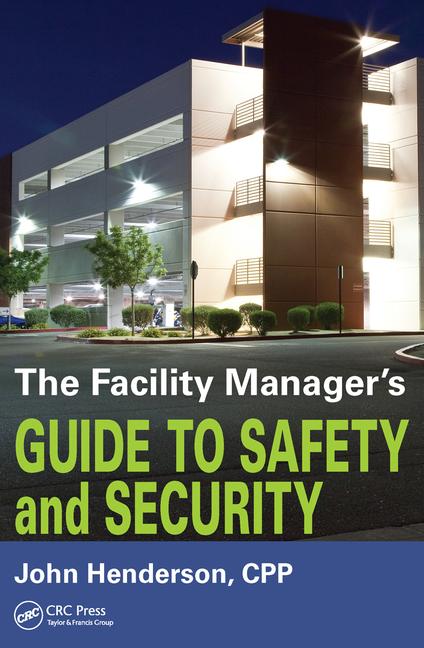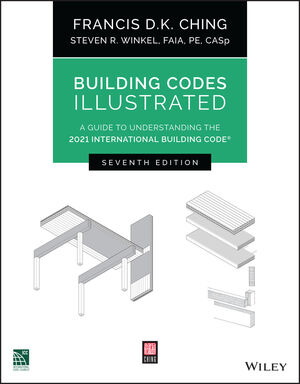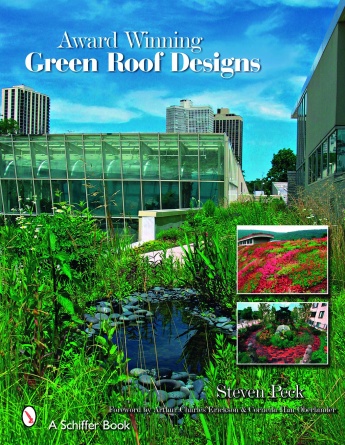Industry Profile: Consultant to the Green Movement
Scott
Kriner is into sustainability and energy savings, and his newly formed
consulting business proves his purpose.

Scott Kriner is into sustainability and energy savings, and his newly formed consulting business proves his purpose.
Kriner, President of Green Metal Consulting Inc. in Macungie, Pa., has found solace in the green movement - or as he likes to call it, the “green market.”
“It’s a culmination of 27 years in the metal construction industry,” Kriner told Architectural Roofing & Waterproofing. “I’ve seen a lot of different sides of the metals business in relation to the construction sector.”
With vast experience in substrates and coatings in the construction market, Kriner got to a point where he discovered a new niche market: green buildings.
“It was not being filled by many people in the metal industry,” he said. “It was surprising to find out how hungry companies were to learn how they could become part of this sustainable movement, or understand how big the market would get.”
Getting Green Started
From sleepless nights to lots of research to talking with other consultants, Kriner developed an ambitious business plan and started his own consulting business in 2006.
“The business is dedicated to helping the metal construction industry and those involved to help maneuver through the maze of green initiatives, green incentives, and green standards,” Kriner said. “Not to say I don’t dabble outside the metal construction area because I’ve had inquires.”
Kriner, 49, is LEED AP-certified (Leadership in Energy and Environmental Design Accredited Professional), which turned into a big advantage for the business.
The LEED AP exam is used to qualify individuals as LEED Accredited Professionals. “There’s no doubt becoming LEED AP helped me to meet new clients,” he said. “It increased my value to the client.”
Serving the Metal Construction Association as its technical director, Kriner also consults for manufacturers and suppliers of metal roofing and wall systems. Prior to establishing his consulting firm he was Technical Marketing Manager-Building Products for Akzo-Nobel Coatings Inc. And he started his career with Bethlehem Steel in the coated steel research department at Homer Laboratories.
Kriner also has more than 27 years of experience in the domestic and international metal and coatings industry and has held numerous positions of responsibility on the board of directors of the National Commission for Certifying Agencies (NCCA) and MCA, chairman of CRRC Weathering Farm Task Group, and Chairman of the Zinc and Aluminum Coaters Association. He was the founding chairman of the Cool Metal Roofing Coalition in 2002.
Working with Arkema
For the past year, Kriner has been working with Philadelphia-based Arkema in the area of marketing and technical activities related to the company’s Kynar 500 resin used in paint systems and Aquatec products used for cool metal roofing applications.
“Arkema developed the Aquatec product and had to promote it more from a technical and commercial point of view,” Kriner said. “I worked with Arkema to write some technical papers that appeared in industry trade and technical publications. My role was to review all of the data and the graphics that Arkema had developed, and put together a comprehensive story on the history of Aquatec, and the benefits to a building owner.”
Another recent project for Kriner was promoting the Kynar 500 resin used in paint systems for cool metal roofing. “I was a resource helping them with their marketing program,” he said. “They wanted to be more proactive in the green marketplace.”
Kriner also accepted Arkema’s request to write a blog for their Web site. “They set up a program and I started blogging in the area of cool roofing and energy efficiency,” Kriner noted. “In particular, the Kynar 500 resin features and benefits.”
Building Owners Beware
Simply put, Kriner said most building owners don’t appreciate all of the benefits of a cool roof on a building.
“They look at a roof as a means of protecting the people and equipment from the elements,” he said. “In some cases, the roof can provide aesthetics to the building. What owners sometimes fail to understand is that the roof has an impact on a building’s energy needs as it relates to heating and cooling energy. According to ORNL, half of the cooling and heating energy used by a building is associated with heat loss or heat gain through the roof system.”
Kriner said there are many ways to save energy costs when it comes to a roof. “Roofing products, the complete assembly of the roof, air spaces, barriers, insulation,” he said. “All these things can make a roof assembly more energy efficient and reduce the heat gain and loss, while bringing the building that much closer to net zero energy use.”
Beyond LEED points, Kriner said building owners and designers are working toward “net zero energy buildings.”
“They need to design as much efficiency to combat energy loss,” he said. “The roof is often out of sight and out of mind, and a key contribution to the building envelope. Why not make it energy efficient?”
Beyond Metal
Kriner’s background is in cool metal roofing, but he sees himself as a consultant beyond metal roofing in the future.
“More of a general consulting resources to green building practices for all types of products,” he said. “I am already open to areas besides metal construction. I can broaden my exposure and help an organization with the complexities of the green building market.”
Kriner called it “amazing” how many companies in the metal roofing industry originally did not understand the advantages of a sustainable roof. “They were successfully promoting metal, but often didn’t know about the cool roof advantages,” he said.
As far as sales strategies, Kriner said sustainability is “not a fad or societal movement.”
“It’s now a green market,” he said. “Ten years ago there were always companies standing on the sidelines, saying green was a flash in the pan. It became more of reality, a voluntary program. Here we are - even with the market turned down - and most experts say green is the bright spot in construction right now.”
Future Architect Projects
One of Kriner’s future goals is to help more companies establish green information on their Web sites. “Ideally, it would be good to see more stand-alone Web sites providing information in the green market and writing material to keep it fresh,” he said. “I have several clients who I am helping get into the market with this approach.”
In the world of architecture, Kriner said he refers clients to programs the American Institute of Architects (AIA) has established. After all, Kriner is a member of AIA.
“I am bringing to the table projects that are helping drive the market from an architect’s point of view to the construction and operation stages,” Kriner said. “My guess is there’s no 100 percent guarantee. We’ve seen fads come and go, but the green building market is here to stay. I’m convinced it is. If climate change goes away, there’s still an economic advantage to building something that uses less energy.”
“From a financial point of view, there’s still incentive to reduce energy costs,” he continued. “Current sources of energy are limited and price is continuing to go up over the long haul. Why wouldn’t you want to design a building that is energy efficient?”
“I know energy codes are 25 percent more stringent since they were in the late 1980s, and expected to become 30 percent more stringent over the next five years,” he said. “This drives builders to design energy efficient buildings. We know the federal government wants more energy efficiency.”
“The building market is solid and will be secure in the long run - just to keep up with population growth,” he concluded. “It’s a good business to be in sustainable building and construction. It is here to stay.”

Scott
Kriner, President of Green Metal Consulting Inc. in Macungie, Pa., sees the
green market as a bright spot in the economy.
Scott Kriner is into sustainability and energy savings, and his newly formed consulting business proves his purpose.
Kriner, President of Green Metal Consulting Inc. in Macungie, Pa., has found solace in the green movement - or as he likes to call it, the “green market.”
“It’s a culmination of 27 years in the metal construction industry,” Kriner told Architectural Roofing & Waterproofing. “I’ve seen a lot of different sides of the metals business in relation to the construction sector.”
With vast experience in substrates and coatings in the construction market, Kriner got to a point where he discovered a new niche market: green buildings.
“It was not being filled by many people in the metal industry,” he said. “It was surprising to find out how hungry companies were to learn how they could become part of this sustainable movement, or understand how big the market would get.”
Getting Green Started
From sleepless nights to lots of research to talking with other consultants, Kriner developed an ambitious business plan and started his own consulting business in 2006.
“The business is dedicated to helping the metal construction industry and those involved to help maneuver through the maze of green initiatives, green incentives, and green standards,” Kriner said. “Not to say I don’t dabble outside the metal construction area because I’ve had inquires.”
Kriner, 49, is LEED AP-certified (Leadership in Energy and Environmental Design Accredited Professional), which turned into a big advantage for the business.
The LEED AP exam is used to qualify individuals as LEED Accredited Professionals. “There’s no doubt becoming LEED AP helped me to meet new clients,” he said. “It increased my value to the client.”
Serving the Metal Construction Association as its technical director, Kriner also consults for manufacturers and suppliers of metal roofing and wall systems. Prior to establishing his consulting firm he was Technical Marketing Manager-Building Products for Akzo-Nobel Coatings Inc. And he started his career with Bethlehem Steel in the coated steel research department at Homer Laboratories.
Kriner also has more than 27 years of experience in the domestic and international metal and coatings industry and has held numerous positions of responsibility on the board of directors of the National Commission for Certifying Agencies (NCCA) and MCA, chairman of CRRC Weathering Farm Task Group, and Chairman of the Zinc and Aluminum Coaters Association. He was the founding chairman of the Cool Metal Roofing Coalition in 2002.
Working with Arkema
For the past year, Kriner has been working with Philadelphia-based Arkema in the area of marketing and technical activities related to the company’s Kynar 500 resin used in paint systems and Aquatec products used for cool metal roofing applications.
“Arkema developed the Aquatec product and had to promote it more from a technical and commercial point of view,” Kriner said. “I worked with Arkema to write some technical papers that appeared in industry trade and technical publications. My role was to review all of the data and the graphics that Arkema had developed, and put together a comprehensive story on the history of Aquatec, and the benefits to a building owner.”
Another recent project for Kriner was promoting the Kynar 500 resin used in paint systems for cool metal roofing. “I was a resource helping them with their marketing program,” he said. “They wanted to be more proactive in the green marketplace.”
Kriner also accepted Arkema’s request to write a blog for their Web site. “They set up a program and I started blogging in the area of cool roofing and energy efficiency,” Kriner noted. “In particular, the Kynar 500 resin features and benefits.”
Building Owners Beware
Simply put, Kriner said most building owners don’t appreciate all of the benefits of a cool roof on a building.
“They look at a roof as a means of protecting the people and equipment from the elements,” he said. “In some cases, the roof can provide aesthetics to the building. What owners sometimes fail to understand is that the roof has an impact on a building’s energy needs as it relates to heating and cooling energy. According to ORNL, half of the cooling and heating energy used by a building is associated with heat loss or heat gain through the roof system.”
Kriner said there are many ways to save energy costs when it comes to a roof. “Roofing products, the complete assembly of the roof, air spaces, barriers, insulation,” he said. “All these things can make a roof assembly more energy efficient and reduce the heat gain and loss, while bringing the building that much closer to net zero energy use.”
Beyond LEED points, Kriner said building owners and designers are working toward “net zero energy buildings.”
“They need to design as much efficiency to combat energy loss,” he said. “The roof is often out of sight and out of mind, and a key contribution to the building envelope. Why not make it energy efficient?”
Beyond Metal
Kriner’s background is in cool metal roofing, but he sees himself as a consultant beyond metal roofing in the future.
“More of a general consulting resources to green building practices for all types of products,” he said. “I am already open to areas besides metal construction. I can broaden my exposure and help an organization with the complexities of the green building market.”
Kriner called it “amazing” how many companies in the metal roofing industry originally did not understand the advantages of a sustainable roof. “They were successfully promoting metal, but often didn’t know about the cool roof advantages,” he said.
As far as sales strategies, Kriner said sustainability is “not a fad or societal movement.”
“It’s now a green market,” he said. “Ten years ago there were always companies standing on the sidelines, saying green was a flash in the pan. It became more of reality, a voluntary program. Here we are - even with the market turned down - and most experts say green is the bright spot in construction right now.”
Future Architect Projects
One of Kriner’s future goals is to help more companies establish green information on their Web sites. “Ideally, it would be good to see more stand-alone Web sites providing information in the green market and writing material to keep it fresh,” he said. “I have several clients who I am helping get into the market with this approach.”
In the world of architecture, Kriner said he refers clients to programs the American Institute of Architects (AIA) has established. After all, Kriner is a member of AIA.
“I am bringing to the table projects that are helping drive the market from an architect’s point of view to the construction and operation stages,” Kriner said. “My guess is there’s no 100 percent guarantee. We’ve seen fads come and go, but the green building market is here to stay. I’m convinced it is. If climate change goes away, there’s still an economic advantage to building something that uses less energy.”
“From a financial point of view, there’s still incentive to reduce energy costs,” he continued. “Current sources of energy are limited and price is continuing to go up over the long haul. Why wouldn’t you want to design a building that is energy efficient?”
“I know energy codes are 25 percent more stringent since they were in the late 1980s, and expected to become 30 percent more stringent over the next five years,” he said. “This drives builders to design energy efficient buildings. We know the federal government wants more energy efficiency.”
“The building market is solid and will be secure in the long run - just to keep up with population growth,” he concluded. “It’s a good business to be in sustainable building and construction. It is here to stay.”
Looking for a reprint of this article?
From high-res PDFs to custom plaques, order your copy today!








